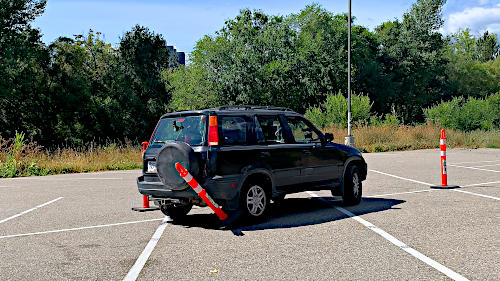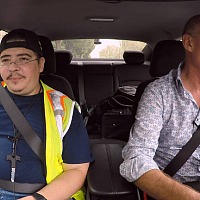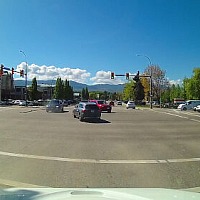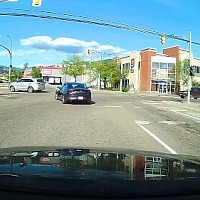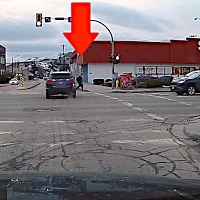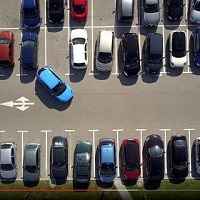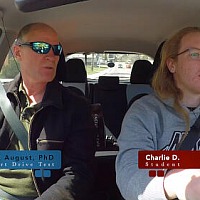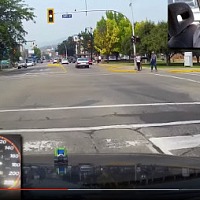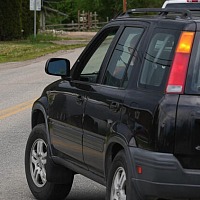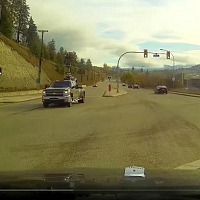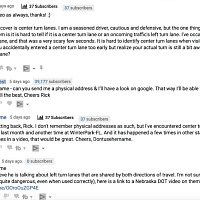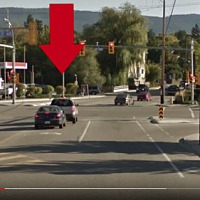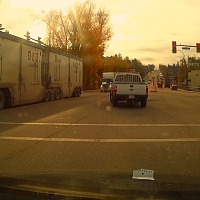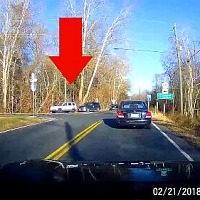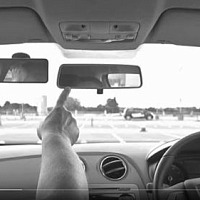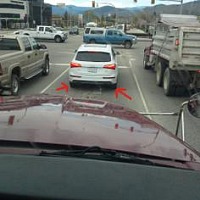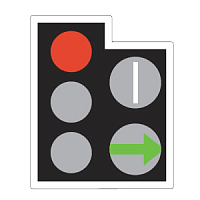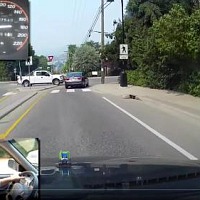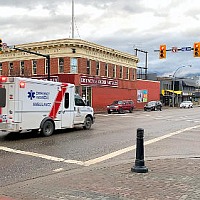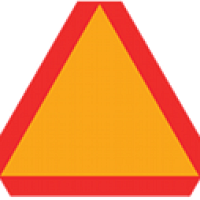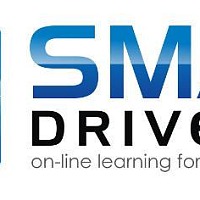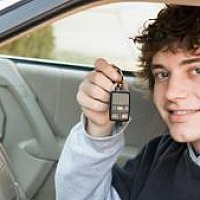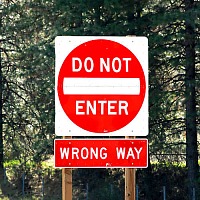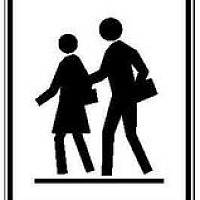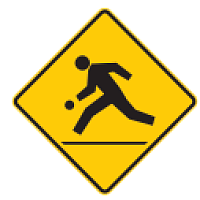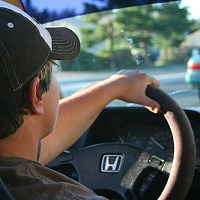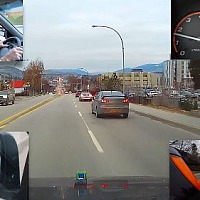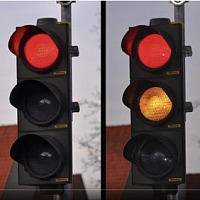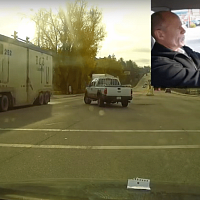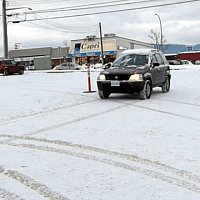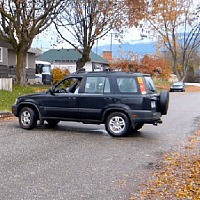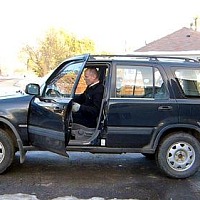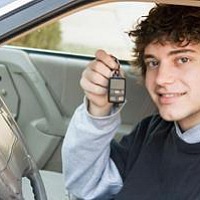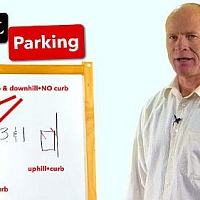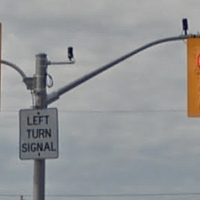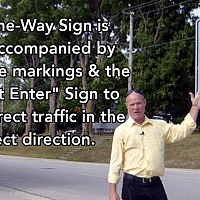4 Must Have Skills to Pass First Time!!
Believe it or NOT - driving tests are easier in the winter.

I asked smart driver over on the Smart Drive Test YouTube channel if they thought they could pass an on-road driver's test.
Just slightly more than 1/3 of smart driver's answered the question honestly and accurately.
Of the 2/3 of smart drivers that think they could pass a driver's test without any preparation, I'm here to say, that they are sadly mistaken.
My professional guess is that less than fifteen percent would pass a driver's test.
Almost 70% of those polled believed they could pass a driver's test....wrong!
One Parent's Surprise
Sitting around fter my jiu-jitsu class a few days ago, this very topic came up.
Could you pass a driver's test?
My friend Ben indicated that his teenaged daughter was preparing for her driving test.
He was incredulous that you would fail your driving test for not applying the parking brake when you parked the vehicle.
I smiled and said, "Ya."
Two Ways to Fail a Driving Test
There are two ways that you will fail a driver's test.
Fail Outright
You commit a dangerous action such as:
• NOT stopping for an emergency vehicle;
• entering an intersection you can't clear and the light turns red;
• another road user has to take evasive action;
• the examiner takes control of the vehicle.
This is not an exhaustive list of reasons that you will fail your driver's test outright.
Fail With Too Many Errors
The second way that you fail a driving test is too many minor errors.
For every minor error you're assigned demerit points.
Touching the dividing line on a multi-lane road, for example, will usually be assigned five demerit points. A turn that is too wide could be assigned fifteen or twenty points.
Most driving tests allow thirty-five points before you fail the test.
Five Fatal Flaws
That Would Cause You To Fail a Driver's Test

Drivers' tests requires a specific skill set to be successful.
#1 - Shoulder (Head) Checking
Shoulder checking every time you change directions of the vehicle is the number one reason that new drivers fail their test.
And for most drivers that have had their license for more than three months, this is the first defensive driving skill that goes out the proverbial window.
CLICK for more information
Not only will NOT shoulder checking cause you to fail a driver's test, but it's dangerous.
Why would you change direction of a 3,000lbs vehicle at speed, and not check to see if there was another road user is your blind areas?
And yes, you have to shoulder check on left turns too.
Say it with me: "Every time I change direction of the vehicle I have to shoulder check!"
#2 - Space Management
In ideal traffic conditions you must have a two to three second following distance.
And how to you determine a safe following distance?
Yes, you can do that "counting watermelons thing" when the vehicle in front passes a fix object.
If you have three watermelons when you pass the same fixed object, then you're good.
But the reality is that no driver ever, ever does that.
Signal every time you change directions both forward and when backing, especially in parking lots.
Ideally you should be using the gas pedal to control space in front of your vehicle.
If you're looking far down the road and reading traffic patterns—most of the time—you can interpret and predict the actions of individual road users.
Thus allowing you to control space in front of your vehicle with just the accelerator.
The only times you use the brake are:
• stopping
• slowing the vehicle when other traffic in front is turning
• controlling speed on a downgrade;
• unexpected events.
If you're using the brake because you're reacting to other traffic, you're following too close and will fail your driver's test.
Also, you have to stop in traffic so that you are approximately one vehicle length—you vehicle—from the car in front.
Your landmark is the examiner being able to see the tires of the vehicle in front making clear contact with the roadway.
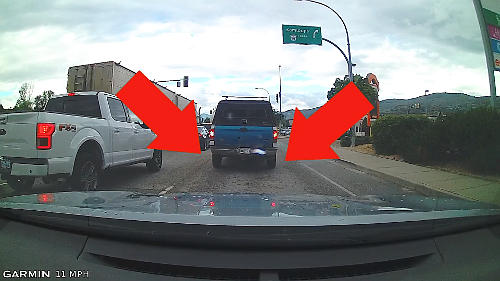
Stop back in traffic approximately 1 vehicle length.
#3 - Communication & Observation
Drivers’ inability to communicate effectively is most prominent in upgrading drivers.
Those that already had a license and were now upgrading to a semi-truck or bus license.
On a driving lesson we'd be driving through town in the right lane.
I’d indicate for the student to move to the left lane in preparation to make a left turn a few blocks up the road.
Keep in mind, this same thing happened with numerous students.
After a few seconds, I’d ask the student why he wasn’t moving to the left lane.
Signals are to tell other drivers that you wish to move over...not that you ARE moving over!
It was always the same answer: “Nobody’ll let me in!”
My answer could have been put on a voice recording.

Most drivers do NOT have the required observation and communication skills to pass a driver's test.
“Well…did you try putting on your turn signal and asking other traffic if you could move over?”
Within a few moments of activating the turn signal, a gap presented itself and the student changed lanes.
Every time it happened I'd look at the student until I caught his attention.
I'm using the male pronoun because 97% of truck driving students are men.
“It’s like magic” I said in my whisper growl with a look of wide eyes and wonder.
******
On a driver's test you must signal every time you change directions of the vehicle.
And before changing direction of the car, you must have at least three flashes of the signal minimum.
1) The first flash gets other road users attention.
2) The second allows the road user to located you.
3) The third flash allows the other driver to take evasive action.
In the case of merging, the other driver may decide to speed up and get past you.
If she does that, then she helped you out.
And yes, you must signal even in parking lots.
Many testing drivers gets a demerit for NOT signalling when leaving the parking space at the test center.
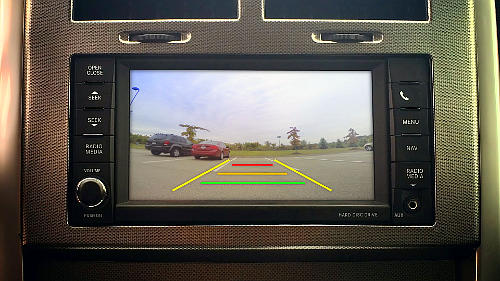
You can use a backup camera on a driver's test, you just can't use it as your primary line of sight.
Do you still think you can pass your driver's test?
#4 - Turning & Yellow Lights
For the purposes of a driving test, yellow and red traffic lights mean the same thing.
If you can do so safely... STOP.
Too many driver's think that yellow means to accelerate to "beat the light."
If you do that on a driver's test, I guarantee you it'll be a short trip back to the test centre.
And yes, if you can't do so safely because some dummies is tailgating you, then you have to do a couple of things to warn the driver to your rear:
1) tap the brake pedal to flash your brakes lights and get their attention;
2) slow down really slowly.
However, if the light goes from green to red, as it some times does, you may have to go through the intersection.

Maintain a 3 - 4 second following distance for the duration of the driver's test.
Of course, covering the brake in case you have to come to a sudden stop.
Yellow traffic lights catch a lot of drivers unawares.
If you proceed through an intersection and the examiner looks up and the light turns red, that's an automatic fail.
Turning too.
If you're waiting to make a left turn and the light turns yellow and you're not moving into the intersection.
Let's back up one step.
First, too many veteran drivers are gong to be too deep in the intersection to make the left turn.
When making a left turn for the purposes of a driving test, you must wait at the edge of the intersection.
Your landmark: wait with your front steer tires on the front crosswalk line.
The instant the light turns yellow, drive straight into the intersection.
When you've double and triple checked that oncoming traffic has indeed stoped, complete your turn.
Again you'll fail your test because of the incorrect procedure at a yellow light. Both when proceeding straight and when turning.
#5 - Parking & Slow-Speed Maneuvers
Although 7/8ths of the driver's test is in a forward motion, it's the 1/8th comprised of slow-speed maneuvers that gives testing drivers the most grief.
For a driver's test you must be able to parallel park, back into a parking space and do a 3-point turn at minimum.
Every driving test, except for three states, have the same required maneuvers:
1) Backing into a parking spot;
2) 3-Point Turn (K or Y Turn);
3) Parallel parking.
Ohio has the Ohio Maneuverability Test; California gets students to back up along the curb for approximately 50' feet; and Maryland requires students to do a 2-Point Reverse Turn.
All the other slow-speed manoevers are not required, but if you get an ogre for an examiner and she has some extra time on her hands, at her discretion she can get you to do maneuvers from the handbook. These might be:
• 2-Point Reverse Turn
• Parking along a curb
• Driving into a parking space
• Angle parking
• or parallel parking between 2 cars.
For a driver's test, be prepared with the three basic maneuvers.
And for those of you in Ohio, there is little chance that you're going to pass a driver's test without a couple of practice runs at the Ohio Maneuverability Test.
In and around the state of Ohio, there are places that have the course set up and you can go there and practice. Google these locations.
And if you are good at parking and reversing, you should do alright at this part of the driver's test, even though it's a small part.
One last thing: you'll have to know if the test center you're going to does the maneuvers using pylons in the parking lot.
Reverse stall parking, 3-point turns, parallel parking and the Ohio Maneuverability tests can all be done using pylons.

And yes, with a bit of work and practice you too can pass your driver's test.
How to Pass Your Diver's Test
Take one driving lesson with a driving instructor.
Driving instructors teach drivers how to pass a driving test EVERY day.
That's their job.
Yes, it'll cost you a bit of money.
But the return on investment is really high - better than a 95% chance of passing with the correct instruction from a driving instructor.
Driving instructors wil take you on the test routes used by examiners, they will get you to do the slow-speed maneuvers, and they wil give you feedback on the skills and abilities that you need to strengthen to ensure you pass the test.
Finally, they wil give you an honest assessement of whether or not you would pass a test.
Good luck on your driving test.
And remember, pick the best answer, not necessarily the right answer.
#drivingtesttips #passdriverstest #smartdrivetest
No where in any driving manual are these driving test secrets.
Learn the unexpected events on a driver's test!
Learn the pitfalls of a driver's test here! Avoid these mistakes to pass first time.
Learn how to pass your driving test in New York City.
Learn the top 10 most common errors on a driving test and avoid these so you don't fail.




